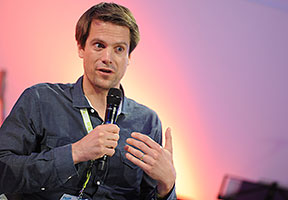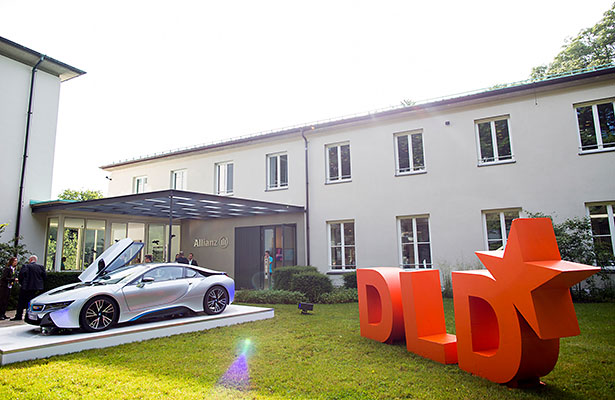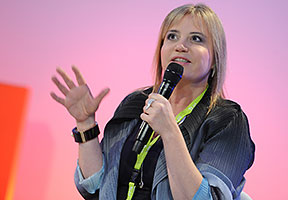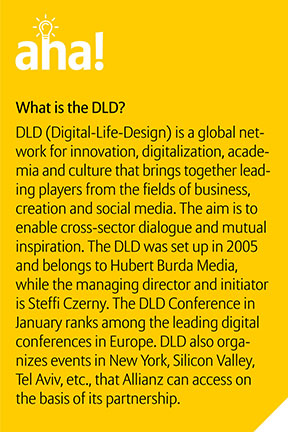Kerstin (32) has for several days been suffering from a sharp stabbing pain in her stomach - sometimes also an itch - directly under her rib cage. Only a few years ago she would have dismissed these symptoms. Not in the area of internet. For two evenings now she has been searching for similar symptoms and possible illnesses in the Internet. Somewhat confused - the web forums she consulted talked about all sorts of illnesses from jaundice and pancreatitis through to cancer - she finally decided to seek the advice of a doctor.
The myriad of information in the Internet does not always confuse patients. Above all the chronically ill use it to search for help, alternative therapies or simply fellow sufferers to exchange their experiences. This is confirmed by Florian Weiß from Jameda.de in a podium discussion at DLDsummer: "The behavior of patients has already changed. A lot of patients go to their doctor equipped with an idea of what their illness could be, along with an appropriate therapy." A veritable trend was evidenced during the two days of the Digital Life Design (DLD) event, which for the first time took place under the name of DLDsummer in the Allianz Auditorium in Munich: Today's patient is wised up, informs himself in web forums, obtains tips from cured people, asks others about their experience with medications. In contrast to these networked sick people there are the so called gods in white coats, who up to a few years ago were still non-contestable. Today they are meant to find a therapy on an equal footing with their patients. But this is only the start of Medicine 2.0.
Above all in Germany patients visit their doctor very often. Various studies indicate that this could be as frequently as 18 times per year. In Sweden and America patients see their doctor only three to four times a year. This is a real challenge for medical practices and health insurance funds. The upshot: full waiting rooms and disgruntled patients. Yet many things could be settled without a personal visit to the doctor.
Moreover, the doctor-patient relationship will change fundamentally. In one of the workshops on the topic of "Digital Health Management" experts at the DLDsummer event discussed to what extent the individual can obtain more control over his state of health. Ida Luka-Lognoné from Allianz Worlwide Partners (AWP) and Peter Vullinghs from Phillips explained how their partnership wants to close a gap in health provision. In a pilot project on the topic of back problems, Phillips introduces the technical devices which alleviate back pain. In addition, AWP offers medical coaching for patients in a 12-week program. Luka-Logononé: “With our personalized coaching and support from our medical experts, we want to empower the patients to take care of themselves and actively contribute to prevention.”
The myriad of information in the Internet does not always confuse patients. Above all the chronically ill use it to search for help, alternative therapies or simply fellow sufferers to exchange their experiences. This is confirmed by Florian Weiß from Jameda.de in a podium discussion at DLDsummer: "The behavior of patients has already changed. A lot of patients go to their doctor equipped with an idea of what their illness could be, along with an appropriate therapy." A veritable trend was evidenced during the two days of the Digital Life Design (DLD) event, which for the first time took place under the name of DLDsummer in the Allianz Auditorium in Munich: Today's patient is wised up, informs himself in web forums, obtains tips from cured people, asks others about their experience with medications. In contrast to these networked sick people there are the so called gods in white coats, who up to a few years ago were still non-contestable. Today they are meant to find a therapy on an equal footing with their patients. But this is only the start of Medicine 2.0.
Nothing can replace a personal discussion – except Skype
Above all in Germany patients visit their doctor very often. Various studies indicate that this could be as frequently as 18 times per year. In Sweden and America patients see their doctor only three to four times a year. This is a real challenge for medical practices and health insurance funds. The upshot: full waiting rooms and disgruntled patients. Yet many things could be settled without a personal visit to the doctor.
Moreover, the doctor-patient relationship will change fundamentally. In one of the workshops on the topic of "Digital Health Management" experts at the DLDsummer event discussed to what extent the individual can obtain more control over his state of health. Ida Luka-Lognoné from Allianz Worlwide Partners (AWP) and Peter Vullinghs from Phillips explained how their partnership wants to close a gap in health provision. In a pilot project on the topic of back problems, Phillips introduces the technical devices which alleviate back pain. In addition, AWP offers medical coaching for patients in a 12-week program. Luka-Logononé: “With our personalized coaching and support from our medical experts, we want to empower the patients to take care of themselves and actively contribute to prevention.”



